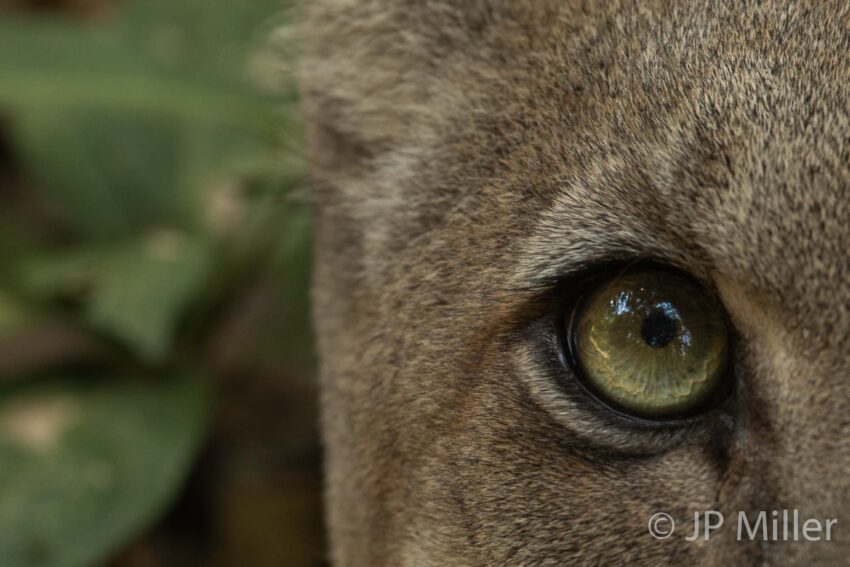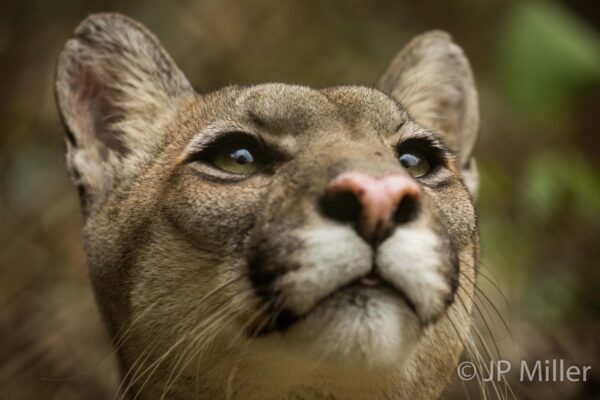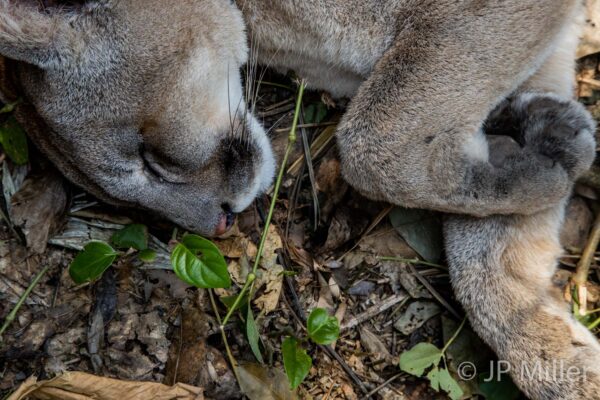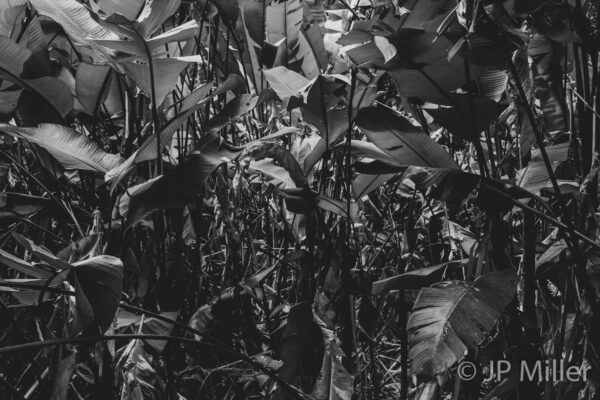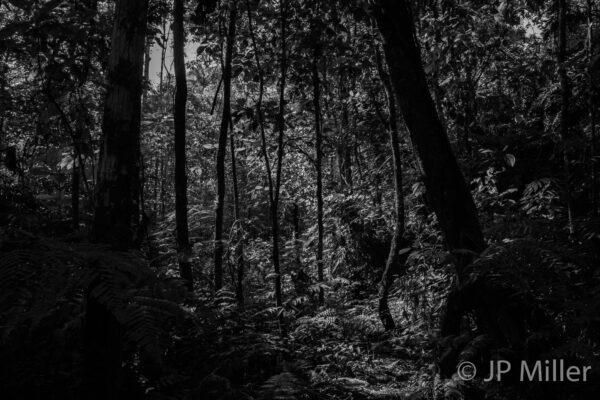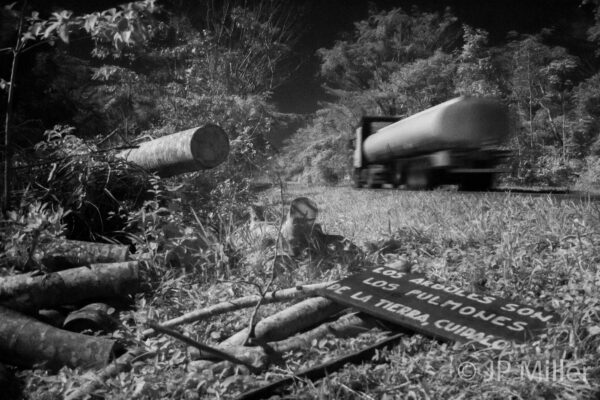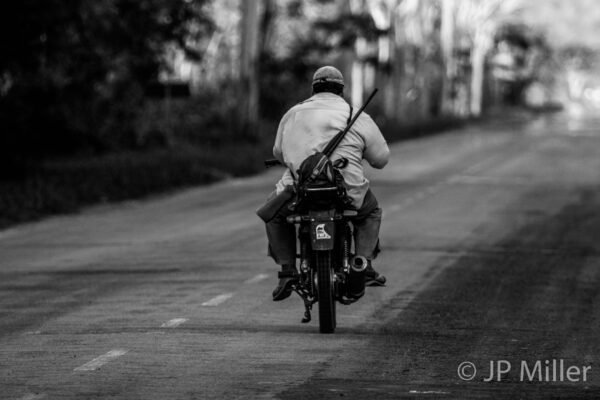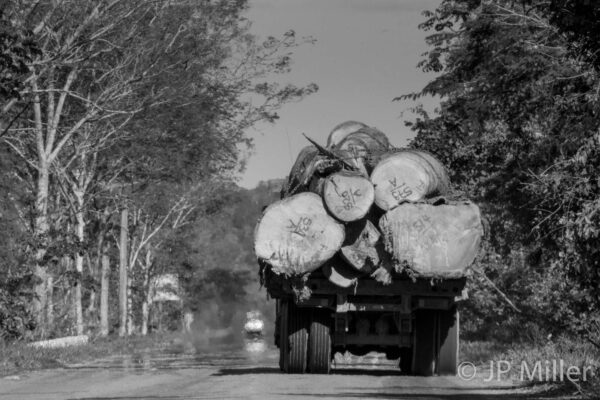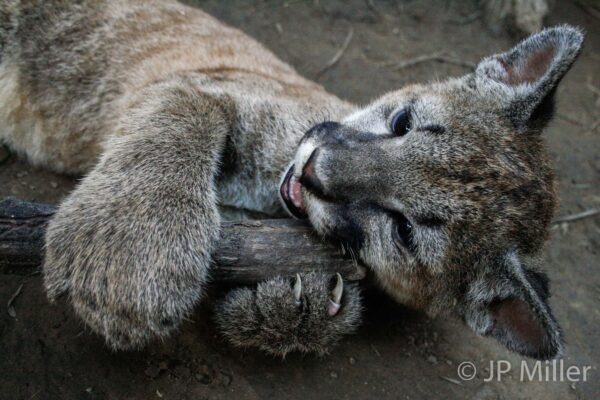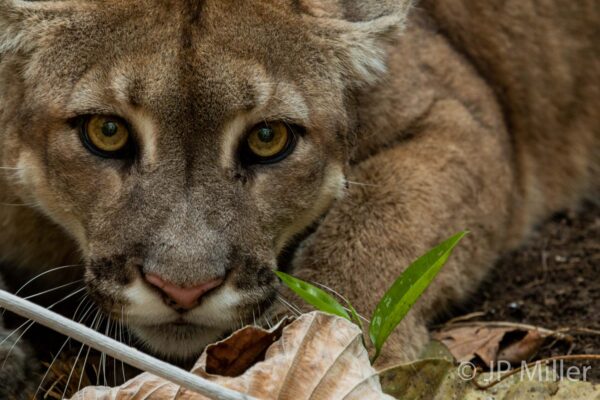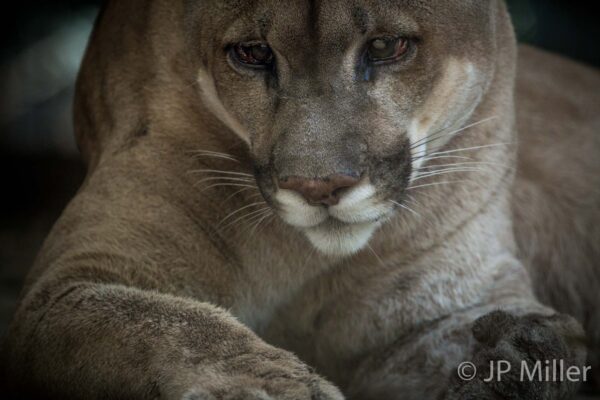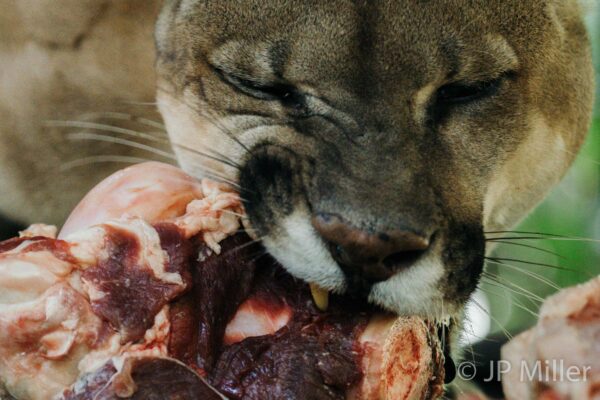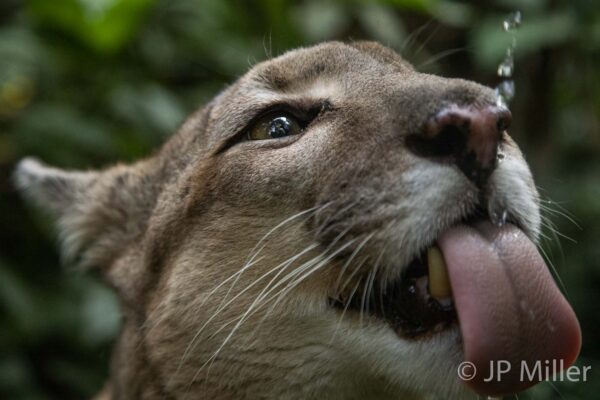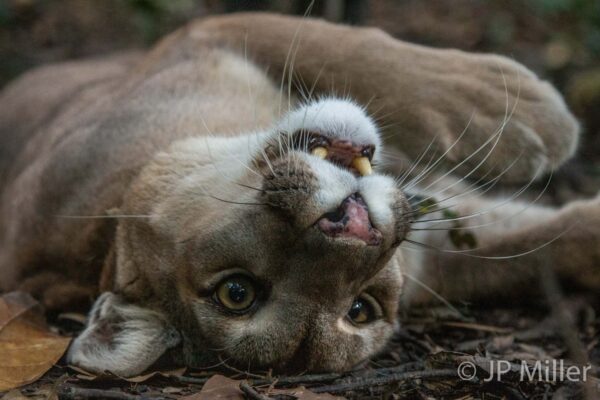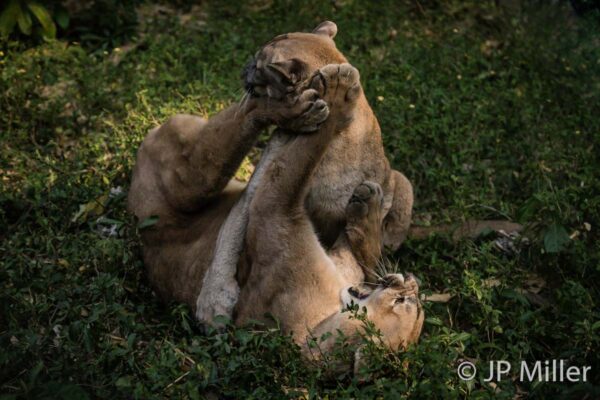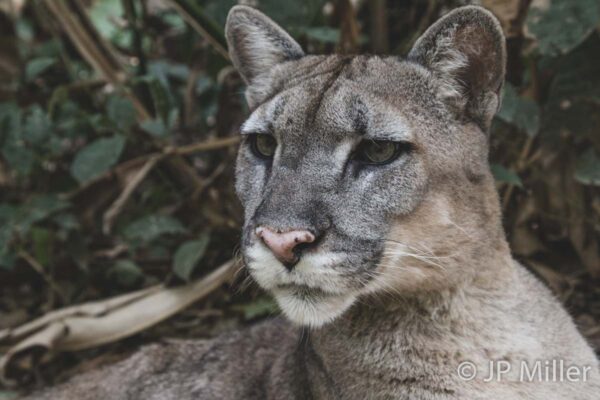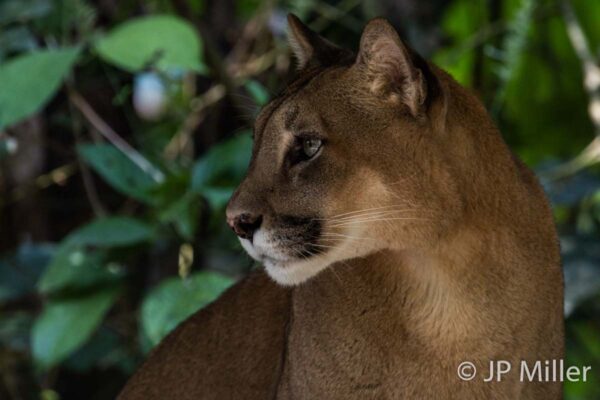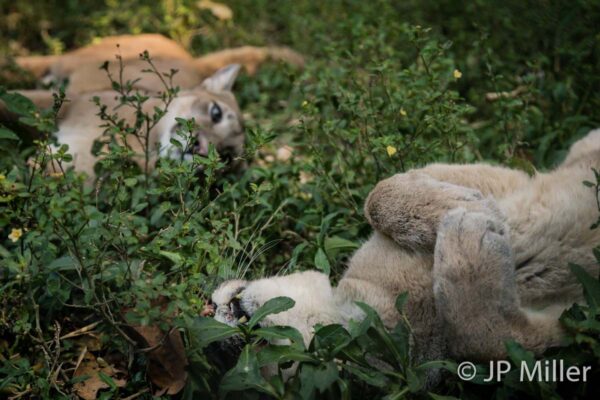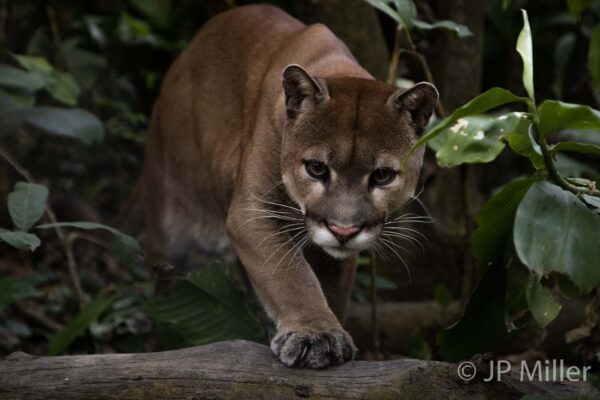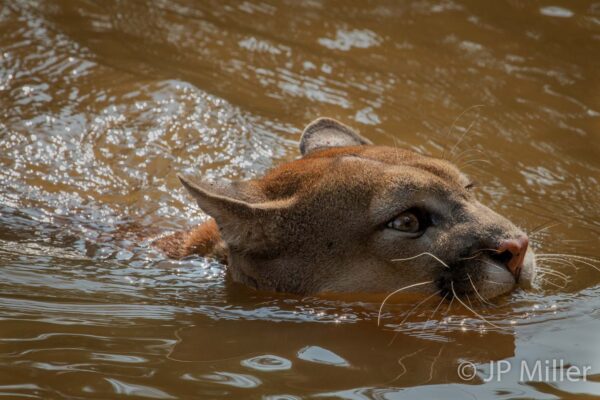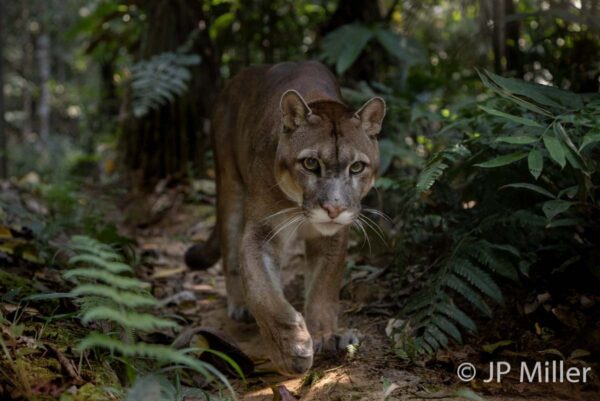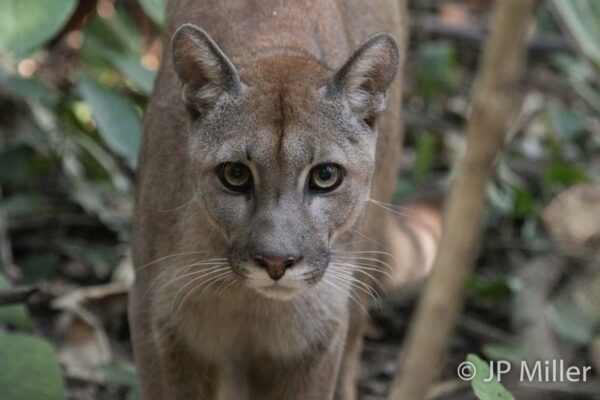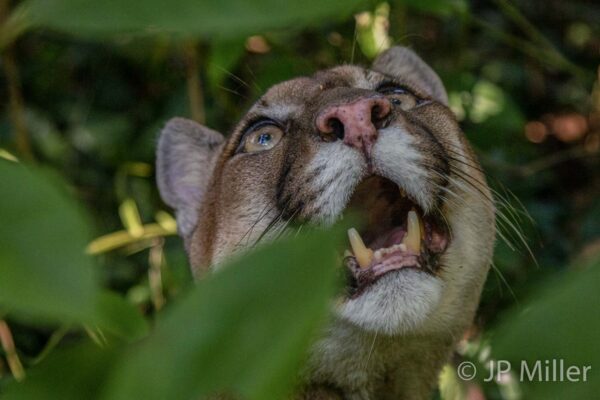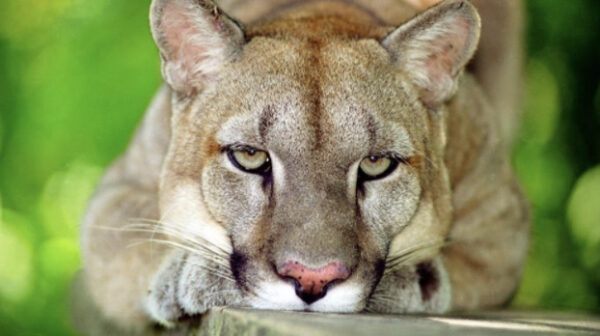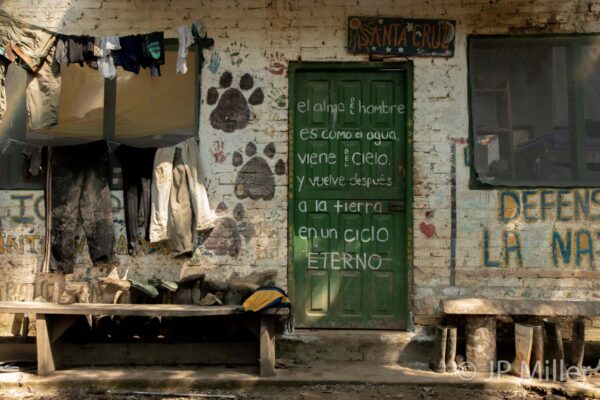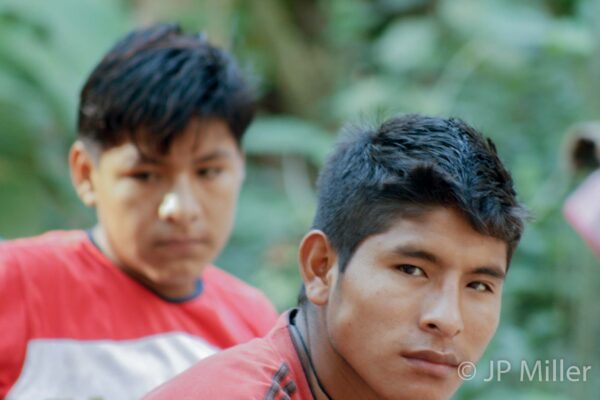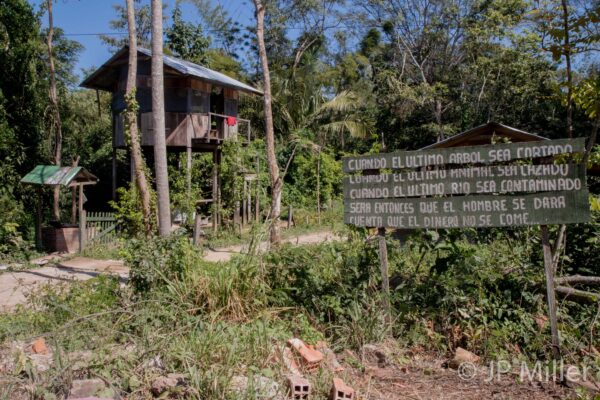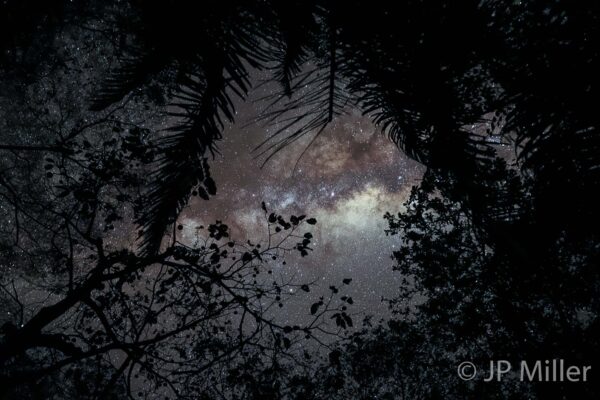This exhibition is dedicated to the memory of a puma named Wayra, to all the animals at Comunidad Inti Wara Yassi (CIWY)’s sanctuaries, and to the people fighting every day in Bolivia to keep those that remain safe. The photos document some of the pumas cared for by Comunidad Inti Wara Yassi. Each of them have their own unique story. Many of the animals have suffered malnourishment, broken bones, digestive issues, and psychological trauma. All of them are victims of the illegal wildlife trade.
All the photographs were taken by JP Miller, during his period as artist in residence at CIWY in 2019. JP has volunteered with CIWY since 2008. In 2015, he held his first exhibition on the plight of the jaguar. He offers this collection of photographs of the Puma Concolor for Lost Species Day 2021; his aim is to raise awareness and support for the plight of the puma and other wildcat species, highlight threats to their welfare and survival, and celebrate the interdependence of species and their ecosystems.
The exhibition is raising funds for CIWY. If you wish to support CIWY by buying a print, please click here for prices. You could also consider volunteering, sponsoring one of the animals or donating directly. Wild animals are not pets. They belong in their own habitats, with their own species. Thank you for your support.
Wayra
Wayra arrived at CIWY when she was 10 months old. Like many animals who find homes in sanctuaries, the details of her history are uncertain. It’s most likely her mother was shot by poachers. Wayra was then sold on the black market. Bought by a street artist, she was used as part of their act on the streets of Potosi. It was only when she grew too big and difficult to manage that she was left at CIWY’s Parque Machía. In 2009, Bolivia introduced laws prohibiting the use of wild animals in circuses, however animals such as jaguars, pumas, monkeys, bears and others are still used as exotic tourist attractions.
Wayra was given her name (“wind” in Quechua) because, right from the get-go, she was fast and mercurial. She was always a worried cat, nervous of her jungle surroundings and of the people around her. She wanted to be wild, but could never be. She didn’t have the time to receive the skills from her mother about how to look after herself. However, her capacity to find love and to trust the people who cared for her was something truly inspiring.
She passed away this year, at 18 years old. And now, like so many of those abused, mistreated, and then cared for with love and respect at CIWY, she runs free in the jungle sky.
THE JUNGLE & THE CLIMATE
Jungles and forests act as carbon sinks, absorbing carbon dioxide from the atmosphere as they grow. When they are cleared or burnt, stored carbon is released into the atmosphere as carbon dioxide. Atmospheric carbon dioxide levels are now at their highest levels in human history. Ecosystems around the world are under threat from deforestation and forest degradation, the main culprits being agriculture and illegal logging. This is not only a concern for the climate but for the biodiversity the forests hold.
The illegal wildlife trade itself is inextricably linked to climate change: illegal logging destroys trees that act as climate regulators, and threatens biodiversity of existing habitats. Environmental shifts driven by climate change generate extreme weather patterns, intensify resource scarcity, and induce instability in local economies. This in turn encourages the emergence and continuation of illicit markets, which further aggravate environmental degradation.
THE RED LIST
Climate change, legal and illegal hunting, deforestation and urbanisation pose significant threats to pumas and other wildlife. The IUCN Red List of Threatened Species (founded 1964), is the world’s most comprehensive inventory of the global conservation status of plant and animal species. The Red List is becoming longer and grimmer, with biodiversity declining and rates of extinction recorded at unprecedented levels globally. Furthermore, according to the 2019 Intergovernmental Science-Policy Platform on Biodiversity and Ecosystem Services (IPBES) IPBES report, roughly one million species of plants and animals (of a total of 8.7 million known species) face extinction within decades as the result of human actions. This biological catastrophe will have serious ecological, economic and social consequences: a crisis for all life on earth.
THE BLACK MARKET
The black market for wild animals is thriving in Bolivia, where people still see them as interesting pets. Young cubs are prized possessions, but are susceptible to mistreatment, disease and illness. Purchased when they are cute and easy to manage, cubs quickly grow into dangerous predators that can cause harm and injury. They become possessive over their food and their territory as they reach an age where they would be seeking independence from their parents. Many people buy these animals knowing they will only have them for a short period of time; once they become dangerous, they get rid of them. There is often no consideration as to what will happen to the animal after this.
Bolivia introduced a general and indefinite ban on the wildlife trade two decades ago, but this measure has failed to stop the trafficking of wild animals, which continue to be sold as exotic pets or killed for their commercial value (e.g. pelts or traditional medicine). Lack of enforcement is multifactorial with very few resources dedicated to animal welfare, a weak legislative system, and an incongruence between environmental law and the criminal code. Interpol has estimated the global illegal trade in live species and animal parts to be worth up to $20 billion per year.
Maggie
Like most of the animals that call CIWY home, Maggie had a tragic start to life. She was captured by poachers at a very young age. Her mother was killed for her fur and Maggie was sold as a pet on the black market. She was surrendered to CIWY in 2007 at around seven months old, when her growing size and strength made the family with which she was living realise just how unsuited a puma is to domesticity. Under CIWY’s care, Maggie grew into a playful and loving puma. She patrols her domain with power and pure energy. Despite the hardships of early life, Maggie meets the world headlong and embodies true bravery as she runs and stalks her way through the jungle. No animal of such spirit, warmth and energy should ever be caged.
Tupac
Tupac’s mother was shot by ranchers when she was spotted stalking livestock. The shot did not kill her and her trail was followed back to her den where she was caring for two cubs. The ranchers found Tupac’s mother and beat her to death. They then beat the two cubs with such brutality that his brother died. Tupac was significantly injured and suffered irreversible vision loss from blows to the head. He was then sold as a family pet in Cochabamba.
Tupac was rescued by CIWY in 2006. Despite all the trauma he endured he grew up to become one of the largest and strongest pumas at the refuge. Tupac acted as every volunteer’s confidant; he would enjoy listening to stories and being talked to whilst in the jungle. Despite not being able to see, he had other highly sensitive senses and greatly enjoyed the smells, sounds and peace of the jungle. In the company and love of many, CIWY did its best to give him a quiet life in the hope of erasing his past traumas. Tupac’s health gradually deteriorated and he passed away last year at the age of only 14. He was the biggest puma, with a huge heart and a pure soul.
Leoncio
As a young puma, Leoncio had a hard start to life. He was taken from his mother and the wild nature where he belonged and was kept as a family pet. As Leo became a little bigger, his playfulness was met with beatings to the point where both his back legs were broken. Neighbours heard Leo howling in pain and contacted the authorities who confiscated him. From this time, he was rehabilitated by CIWY and their volunteers. Leo spent 17 years walking through the jungle with volunteers from around the world. His eagerness to befriend people, to have them understand him and his needs, was an impressive and indescribable quality. He was a beautiful, funny, proud and charismatic cat.
INTI, WARA & YASSI (LAS HERMANAS)
Inti, Wara and Yassi were rescued from the black market of Potosí when they were just nine days old. They had been taken from their mother and were being sold as household pets. As the sisters were unable to be released due to being so young and without a mother, they were entrusted to CIWY to give them lifelong care at the sanctuary. On first arriving, they were very weak and needed round-the-clock veterinary care. They all suffered from epilepsy, which Yassi still lives with to this day.
Inti sadly passed away in 2013. The weight of her loss is still sometimes reflected in Wara and Yassi’s behaviour. Wara and Yassi continue to live together at CIWY in a large enclosure. They are sensitive but playful pumas. If they aren’t chasing each other around or exploring the jungle together, they enjoy happily relaxing at their river, climbing trees and chasing the scent of monkeys and tejons through their own piece of wilderness.
CARLOS
Carlos and his brother Juan were rescued by the authorities from a market in Santa Cruz, Bolivia in 2008. They were to be sold as pets on the black market, after their mother had been killed and they were taken from the wild. They were only a few months old when they arrived at CIWY’s wildlife sanctuary Ambue Ari. They both suffered health complications, most likely a result of the malnutrition they suffered from after being taken from their mother. Devastatingly, Juan passed away in December of that year, and Carlos suffered lifelong health complications which eventually took their toll on his body.
Despite this traumatic start to life, Carlos was an incredibly calm and affectionate animal, who loved company. From the moment Carlos heard your approach, he would chirp his hello before running around with excitement. Greeting you with licks of affection and loud purrs, he would bound out of his enclosure full of joy and anticipation, as he loved nothing more than going on daily walks through his jungle. He would happily spend hours on the scent of wild animals, relaxing in the sun, or getting some chin scratches from his friends.
Carlos should have lived a life free in the jungle, but that freedom was stolen from him. Now he is truly free, with his brother Juan.
SONKO
“Sonqo” means heart in Quechua. A wonderful name for a wonderful puma. Sonko – as with many of the animals under CIWY’s care – was orphaned after his mother was killed and sold illegally. He lived as a “pet” with a family of butchers, fed not much more than scraps and small off cuts of fat and unwanted meat. He arrived at Parque Machía less than a year old in 2004.
Approaching Sonko’s enclosure you were greeted with his distinctive ‘quack’ sound from a great distance. He was always pleased to see his volunteers in the morning, to receive his grass and to get out on the trails. Sonko thoroughly enjoyed long walks; often playful to begin with, Sonko would take every opportunity to scale fallen trees/logs to see if there was an opportunity to playfully interact until finding a cool pool where he would be inclined to chill – extensively! In 2013 he was blessed with a move to Sanctuary Jacj Cuisi and an extended area for him to roam. Now in his later years, he still enjoys long walks, but he balances them with lengthy jungle naps to recharge his batteries.
Capitán
Capitán arrived to CIWY in 2011 with his brother, Flashman. They had been living on an apartment balcony in La Paz. Both were young fully grown pumas who were not accustomed to human contact. They were severely overweight and suffered digestive problems due to an inadequate diet. Sadly, in 2015 Capitán’s brother passed away.
Arriving at Capitán’s jungle oasis each day, you would be greeted with the biggest round eyes and a flick of his strong tail. Capitan is a shy and wary puma at first and needs time to get to know others, but given time, he will spend endless hours with his volunteers walking, playing and talking, and just as many quietly resting in the sun, watching monkeys in the trees, and listening to the sounds of the jungle.
Capitán is being cared for at Parque Jacj Cuisi (‘The Land of Dreams’).
MARLEY
Marley was bought on the black market in Bolivia, at just a little over a month old. Her mother was most likely shot by hunters. As she grew, her health deteriorated and she had epileptic seizures, so the people who bought her decided to hand her over to CIWY for ongoing care.
Marley is a puma with light brown fur that turns white on her belly, with a dyed black tip on her tail and eyes that are spheres of immeasurable depth. Marley has gone through many changes and transitions, but her fighting spirit, and above all her intelligence, have formed a confident and insightful adult puma.
KORU
In August 2009, Koru was rescued from a military base and arrived at Machia in a bad state suffering from malnutrition amongst other things. After a lot of hard work and patience from volunteers and staff he would soon start to enjoy his jungle walks and warm up to his volunteers. Thanks to CIWY, Koru had been given a second chance in life and he sure made the most out of it. Sadly he never grew old. In October 2015 he passed away, much too soon.
GATO
Gato was CIWY’s first puma, the very first feline CIWY rescued. Gato lived very happily in the jungle, until one day some hunters killed his mother and he was sold to a circus while still a cub. I still remember the moment that Gato arrived at Machia, it was the year 1997. He arrived in very bad condition, totally malnourished. He couldn’t walk because in the circus he was hit with a stick on his hind legs, so that he learnt to jump through fire for the show. To read Gato’s full story, click here. (Photo of Gato by Laurent Esposito.)
LIFE IN CAMP
CIWY began in the 1980s, working first with young people in Bolivia’s capital city, La Paz. Their mission quickly evolved as those young people became passionate advocates for environmental protection, and together, a handful of Bolivian volunteers set up the first ever sanctuary for rescued wild animals in the country. That was Parque Machía. Now, CIWY runs three sanctuaries across the country and provides safe homes in the jungle to over 500 wild animals. However, CIWY’s beginnings are never far from their consciousness, and over the years many underprivileged young people have come to live and learn at the sanctuaries, alongside hundreds of international volunteers, finding lifelong vocations in animal care, construction, and sanctuary management.
Life without the puma
Pumas are subordinate predators in the ecosystem, meaning they’re apex carnivores, but also face threats from larger predators like jaguars, wolves and bears. However, when pumas are removed from the picture, a process that biologists call ‘trophic downgrading’ occurs. A cascade of ecological disruptions follow that eventuates with some species thriving while other species decline or are wiped out. The impacts of the wildlife trade, climate change, habitat loss and human development are not solely felt by the puma, but by the entire jungle and all its wildlife. Tolerance and coexistence with large carnivores is a societal challenge that will ultimately determine not only the fate of the Puma Concolor but of humans as well.
Text and tributes written by:
- JP Miller
- Laura Coleman
- Nick Whyte
- Ariadna Alejandra Crispín
- Karen Hyvönen
- Amy Rogers
- Gill Maxwell
- Matt Brimble
- Yolanda Burke
- Andrea Benavente Oliver
- Morten Sivertsen
- Nena Baltazar
—
Share on Twitter /
Share on Facebook
Posted on November 27, 2021
Categories: Endangered & Lost Species, Fundraising
Tags: 2021, CIWY, CIWY Events, Endangered and Lost Species Events, Fundraising, JP Miller, Laura Coleman, Lost Species Day exhibitions, Wayra
